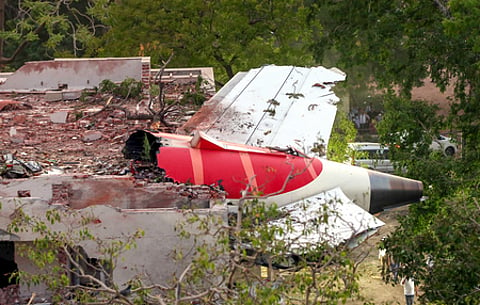Worn tyres, faded runways, broken simulators: India’s top airports under scrutiny
Top regulator takes surprise audit of Delhi, Mumbai airports after deadly Air India crash

Dubai: In a sweeping safety inspection prompted by the recent Air India crash, India’s aviation safety regulator, the Directorate General of Civil Aviation (DGCA), uncovered several serious lapses in airline operations, aircraft maintenance, and airport infrastructure at major airports, including Delhi and Mumbai.
The findings emerged from an overnight surveillance operation conducted on June 19, led by two teams under the Joint Director General of the DGCA. The inspections were part of a new 360-degree audit framework launched just a week after the fatal crash of a London-bound Air India Boeing 787-8 from Ahmedabad, which killed 241 people onboard and caused additional casualties on the ground. The tragedy sparked a regulatory shift aimed at strengthening India’s aviation safety net.
The DGCA’s detailed post-surveillance report paints a concerning picture. Inspectors found multiple safety violations, ranging from worn tyres on operating aircraft and reoccurring mechanical defects to faded runway markings and outdated flight simulators. In one case, a domestic flight was temporarily grounded due to worn-out tyres and was allowed to depart only after urgent maintenance was carried out.
'Unserviceable equipment'
Regulators also noted that ground handling equipment such as baggage trolleys were unserviceable, and key maintenance procedures were not being followed. Technical logbooks lacked proper entries for onboard defect alerts, and several safety precautions—such as locking defective thrust reversers and flap slat levers—were reportedly ignored. Even critical in-flight equipment, such as life vests, were found unsecured under passenger seats.
Airport infrastructure drew similar scrutiny. At one airport, the central line marking on a runway was faded, and taxiway lighting was not correctly aligned. The DGCA further reported that obstruction limitation data around an airport had not been updated for over three years despite visible new construction nearby—a serious oversight in flight safety planning.
Vehicle operations within airport ramp areas were also flagged. Several vehicles lacked speed governors, leading to the cancellation of their Airport Vehicle Permits and suspension of driver authorisations.
'Outdated software'
On the training front, simulators used for pilot practice were found to be running outdated software and didn’t match the actual aircraft configurations—raising concerns about the reliability of simulation-based training programs.
While the DGCA did not name the airlines or airports involved, it confirmed that all concerned operators have been notified and are required to submit corrective actions within seven days. The regulator also reiterated its intent to continue such inspections, saying the surveillance is key to identifying weak links in India’s aviation safety chain.
This high-alert assessment comes as part of the regulator’s broader move toward proactive, system-wide safety checks rather than the previous approach of siloed inspections. For India’s aviation sector—still reeling from the recent tragedy—this marks a turning point in how oversight is conducted and enforced.
Sign up for the Daily Briefing
Get the latest news and updates straight to your inbox



